We have bathed in Orkla before, at the outlet in Orkanger. There, Orkla is flowing peacefully (actually overflowing when we were there, after the storm Gyda’s ravages). Now we wanted to see if the river had other qualities for bathing pleasures. Orkla is Norway’s 11th longest river, 172 km from Orkelsjøen in Oppdal municipality to the Trondheimsfjord. There are 5 power plants in Orkla. Tobatheornottobathe has developed a fascination for waterfall bathing, and before we go for a trip we always check if there are any places on the road with ‘foss’ (waterfall) in their name. And yes, there are waterfalls in Orkla, with scenic names such as Storfossen and Litjfossen (the Big and Small Waterfall).
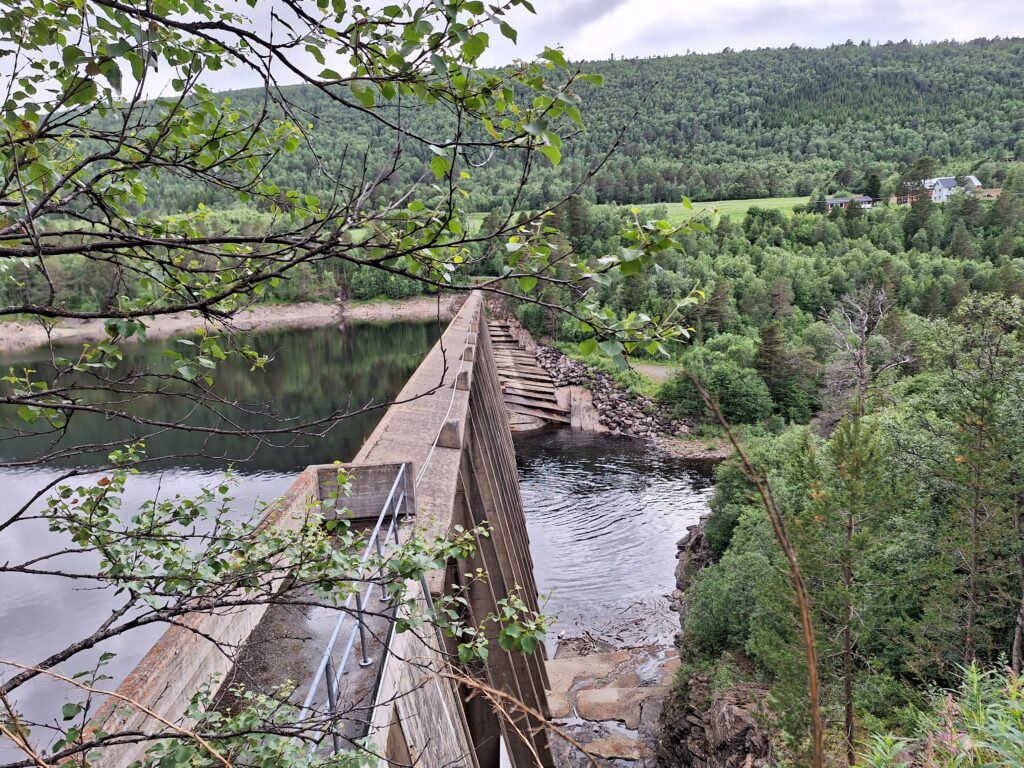
We stopped by Litjfossen, but it was a bit confusing, all the while the dam there was called Storfossdammen. Big or small waterfall? Where are they, these two? Anyway, this was obviously not a good bathing place for Tobatheornottobathe. Even the salmon must have trouble here, as there wasn’t a drop of water in the salmon ladder. At Nåvårdalen, however!
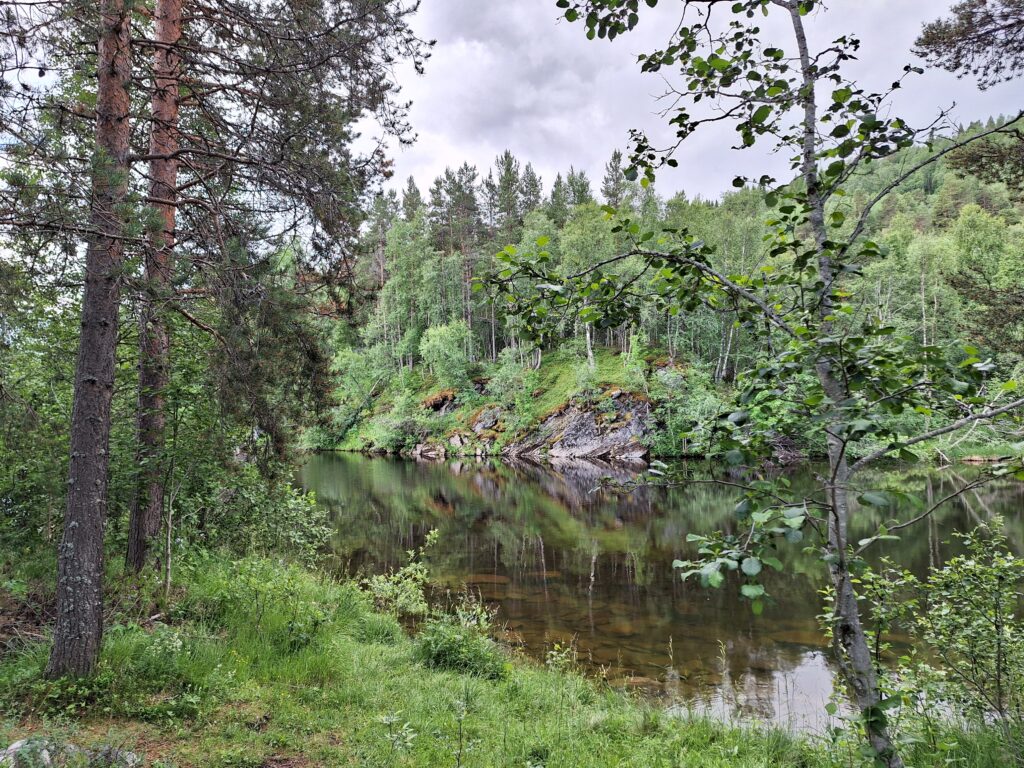
It was a both refreshing and relaxing bath in Orkla. Not much reminiscent of the name meaning ‘the digging river‘. Instead it was tempting to call this gem ‘the Little Orkel Sea’.
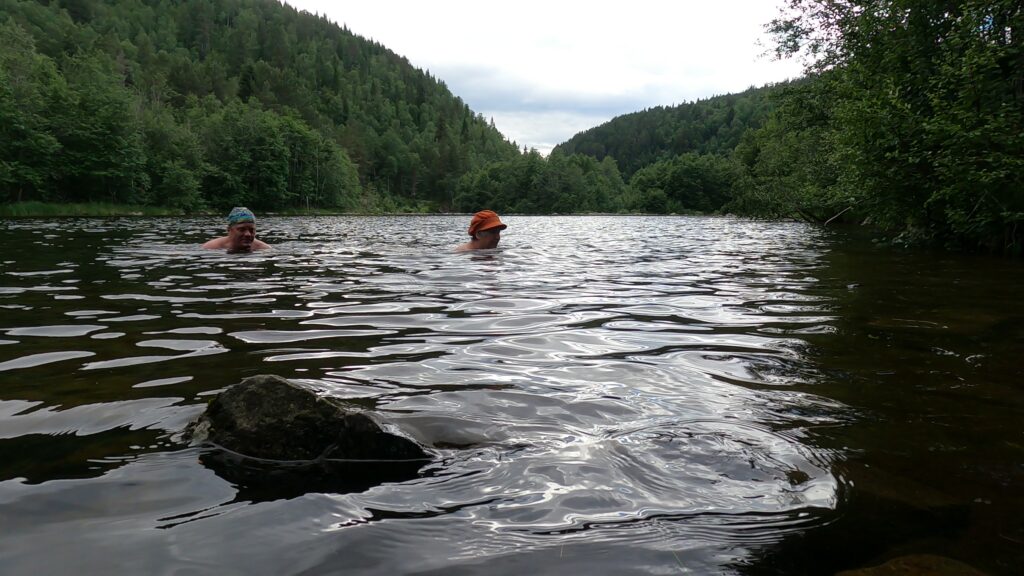
In Nåvårdalen you will find the beautiful remains of Nåvårdalen’s smeltery, which came into operation in 1653. This was the only smeltery of the Kvikne copper mine that was in operation after the ‘Storofsen‘ flooding in 1789. The purpose of the smeltery was to remove as much sulfur as possible from the copper ore.
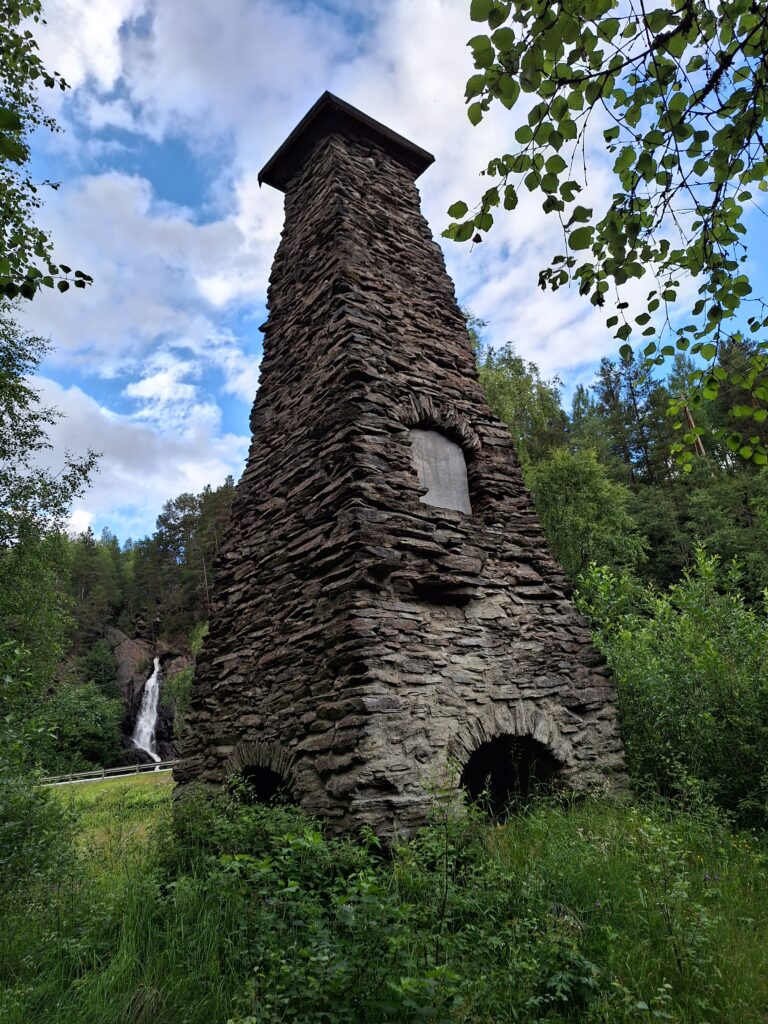
King Christian IV strongly encouraged mining, but for the local farmers it was not necessarily an advantage to report the finding of new ores. Mining meant compulsory labor for the local population, and they could earn more by digging and farming on their own. It is said about the copper ore at Kvikne, that it was discovered by ‘Old Nils’, but that he later forgot where it was…
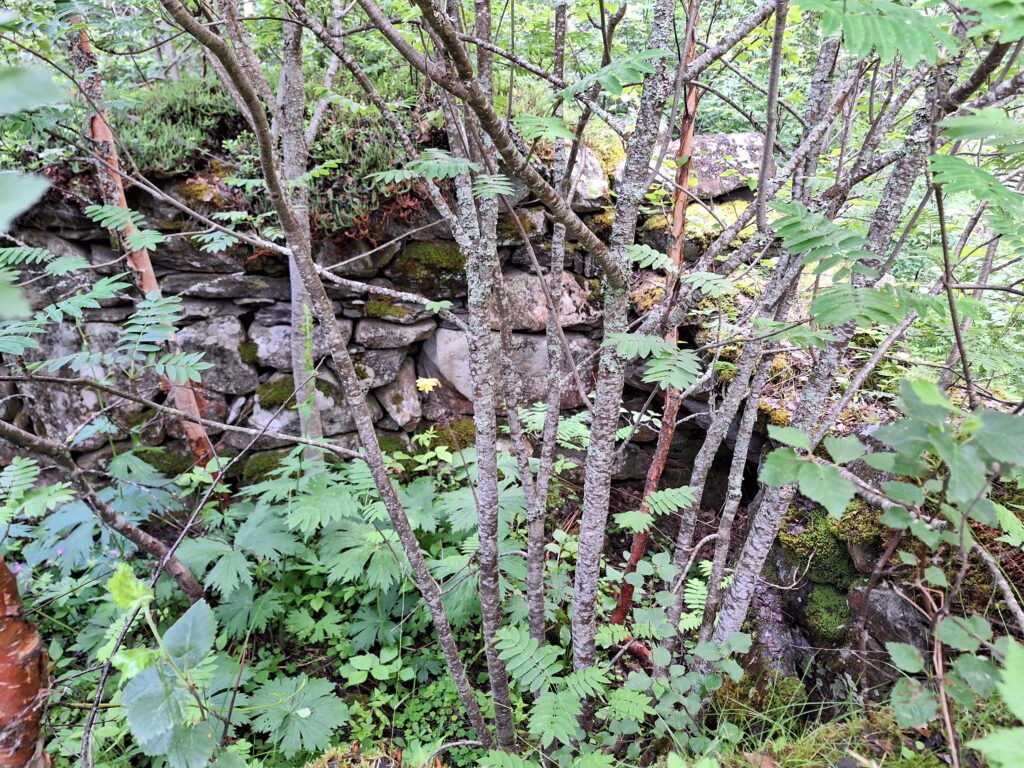
On the other side of Rv 3 we saw a truly beautiful waterfall. Nameless on Google Maps, so we choose to call it Nåvårdalsfossen. We wanted to have a bath there!
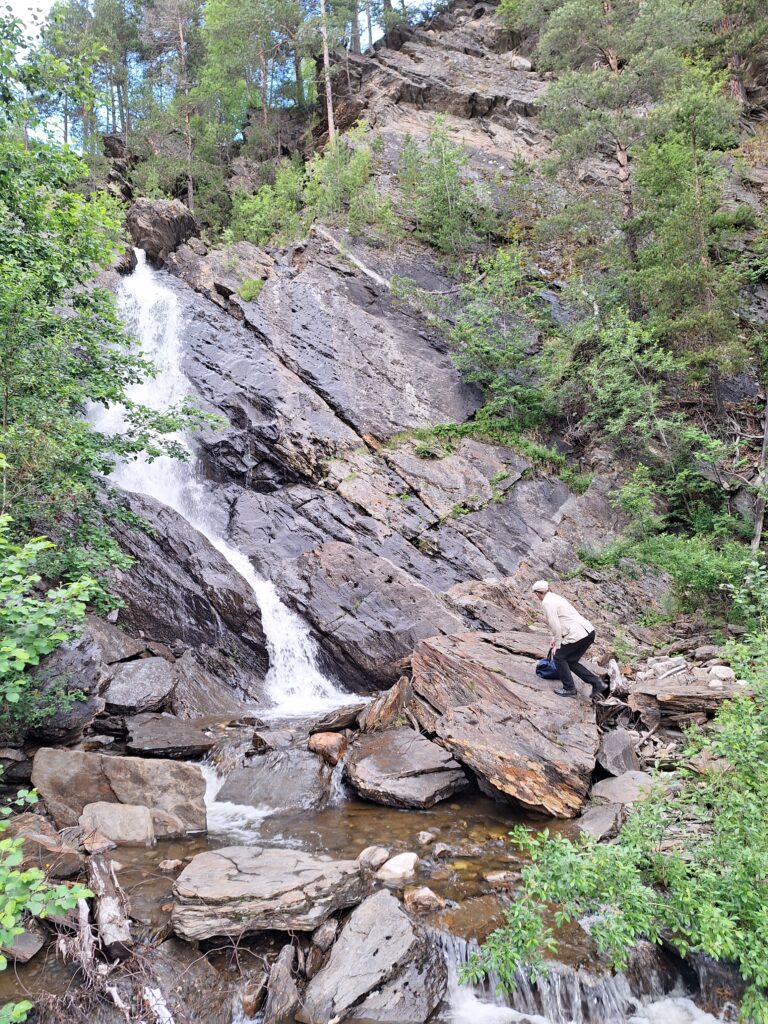
But no. The pools were just not deep enough, and a bath just wasn’t right. After all, we run a blog called ‘To bathe or not to bathe’, and not ‘To dip or not to dip’!